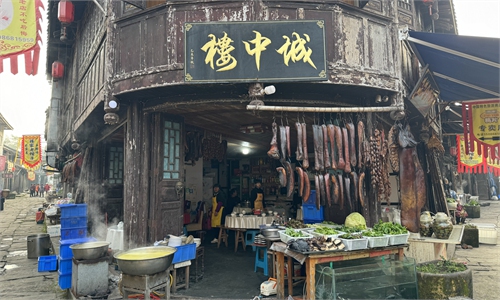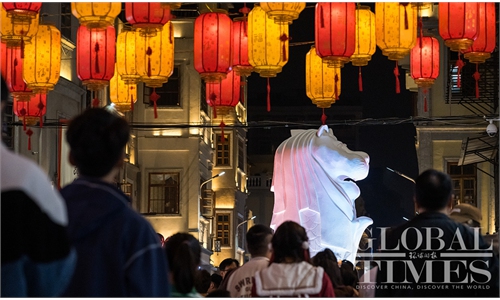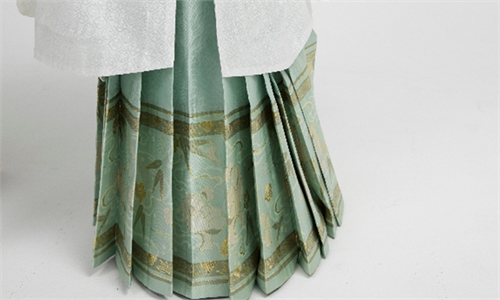ARTS / CULTURE & LEISURE
Shantou, a city bridging overseas culture with local heritage
Forever home
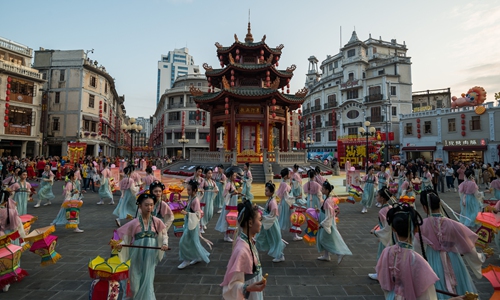
Shantou local folk dancers perform at the Shantou Small Park. Photo: Chen Tao/GT
Potato guo, a type of street snack well-liked by people in Shantou, Guangdong Province, is one of the city's Intangible Cultural Heritage (ICH) dishes that interestingly also speaks about the city's cultural-social characters.
Guo is often made of flour in different varieties such as the rice one with an iconic chewy texture. It is dubbed as the "Chaoshan macaron" due to its colored aesthetics, yet is more meaningfully to be seen as an epitome of the local's cultural belief since they are commonly offered at ancestor-worshiping ritual events - a dish that embodies respect and love.
Whether it is the meaty ones or the ones filled with exotic fruits, picking up a favorite guo has certainly been a test to my decisiveness. Made by a traditional technique but seasoned with curry sauce unique to the Southeast Asian culture, the "potato guo" gifted a tourist like me with a taste of the cultural diversity of Shantou, a city which is also known for embracing a large number of returned overseas Chinese from countries like Thailand and Singapore.
Historically international
Shantou's "international" history manifests in its historical district the Shantou Small Park, which is also the city's cultural landmark. Dating back to the 1860s, the city was an open commercial port that has channeled not only trade, but also cultural traditions, lifestyles and religions from nearby Asian countries like Singapore and Indonesia to China.
Nansheng Department Store is a historical building that highlights the central area of the Shantou Small Park. Just as its name suggests, the building is a mall that local architectural expert Ji Chuanying told me it is already at a "grandfather's age - around 90 years old.''
The mall defines an absolute fashion by then since it was manifested by Li Bohuan, a Chaoshan business man who has returned to his hometown with some most in-trend lifestyles from Indonesia. Adjacent to Li's mall are many other exotically looking buildings, to which a local driver surnamed Li told me that they were all the "immovable urban memories" of local people.
"Many of those buildings were built by our guiqiao, and my grandmother told me that they used to look even more glaring before because they had multi-colored glasses and window frames made of precious woods," Li remarked. Guiqiao is a general term that describes Chinese people who have lived abroad for years and then chose to return to their hometowns.
Conducive to the city's time-gifted cultural diversity, the culture of guiqiao has extended to nowadays to include young generation figures like a local entrepreneur Lin Yong, a suave and well-educated entrepreneur who gave up his British citizenship and returned to his hometown Shantou.
Lin runs a plastic and paper manufacturing company in Shantou, in a more direct sense, his business produces product packaging for mostly overseas clients in Europe and North American countries. The red and gold packages covering the world's best-selling Lindt chocolate ball was only one product made in Lin's Shantou factory.
This year marks the 19th year since Lin started his business while he was in the UK. He said Chinese products' "good quality and good price" characters have helped him greatly knit his worldwide web of clients.
"The UK for example, international traders are now inclined to do businesses with the Chinese people because we are known for being diligent, hard-working and versatile," Lin said. Now his company is a "problem solver" that has created several environmentally friendly packaging for European customers.
"They need Chinese partners like us because they are not able to produce some products like we can do," Lin added.
'I still recognize the hometown sky'
Unlike Lin who lived for nearly a decade in the UK, Rongzi, a 75-year-old Shantou local who has lived in Singapore and Malaysia since she was 8 years old shared a story revealing how deeply the people here are in trust and love with their shared cultural root.
Returning from Singapore to China in 1984, Rongzi was only able to travel over the sea by ship. She said that one day she was looking out on the deck and saw that there were buildings on the coastline.
"I immediately realized that I was approaching really close to my home because I recognized immediately that the dusky sky was exactly what I saw in Shantou when I was a little girl," the lady who is also a novelist told the Global Times.
Although I may not share Rongzi's sentiments of her hometown, I somehow can still see that the reason people are so sentimentally attached to Shantou is because the city constantly provides them with different "fragments of memories." Those bits and pieces about the city define the Shantou people's shared cultural identity regardless of how far they have travelled.
"It is difficult to described, my memory about the city is the light that guides me home," said Rongzi.
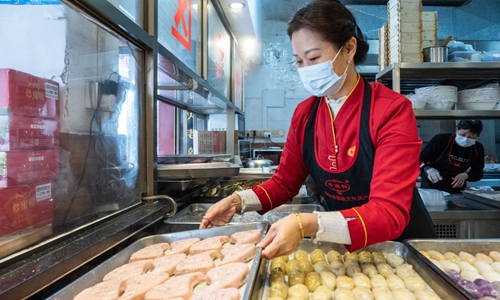
A woman sells the traditional guo snack.Photo: Chen Tao/GT
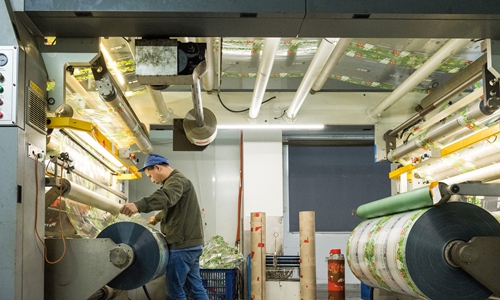
An employee works at Lin Yong's factory in Shantou, South China's Guangdong Province Photo: Chen Tao/GT
